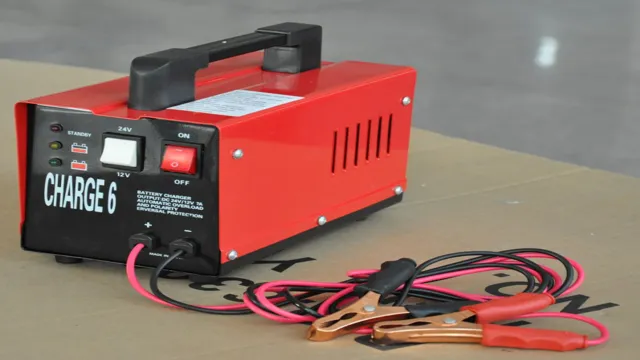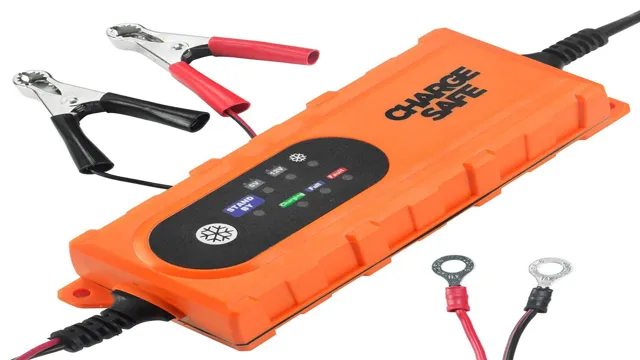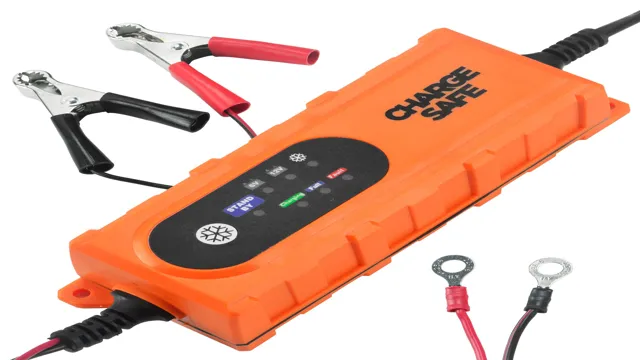What Setting Should a Car Battery Charger Be On? A Beginner’s Guide
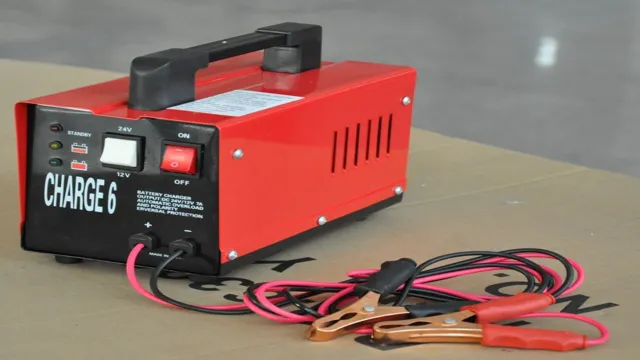
Picture this: it’s a Sunday morning and you’re all set for a long drive, but your car won’t start. Chances are, your car battery has died. So, what do you do? Well, you could jumpstart your car, but that’s only a temporary solution.
The best solution is to use a car battery charger. However, choosing the right setting for your car battery charger can be overwhelming if you’re not sure what you’re looking for. Don’t worry, we’ve got you covered.
In this blog, we’ll explore the best setting for a car battery charger and everything you need to know before charging your dead battery.
Understanding the Charging Process
When it comes to charging your car battery, it can be confusing to know what setting your charger should be on. First of all, it’s important to have the right type of charger for your battery. You don’t want to use a charger meant for a different type of battery because it could damage your car’s electrical system.
Once you have the right charger, look for the charging rate or amperage on the charger. This rate should be adjusted based on the capacity of your battery. If you have a smaller battery with less capacity, a lower charging rate should be used to avoid overcharging.
On the other hand, if you have a larger battery, a higher charging rate can be used to speed up the charging process. The key is to find the right balance between charging time and avoiding overcharging. So, always refer to the manual or consult with a professional if you’re unsure about the right setting for your specific car battery charger.
The Function of a Car Battery Charger
When it comes to car battery chargers, understanding the charging process is crucial. A car battery charger’s primary function is to charge the battery and restore its power. The charger charges the battery by providing an electrical charge that the battery converts into chemical energy.
The charger then monitors the battery’s charge level, adjusting its output to keep the battery at a consistent level of charge. It’s like filling up a glass of water – you need to keep pouring until it’s full, but you need to know when to stop so it doesn’t overflow. The same goes for a car battery charger; it needs to stop charging when the battery is full to avoid overcharging and potential damage to the battery.
It’s important to choose the correct charger for your battery type and capacity to ensure that it can charge your battery safely and effectively.
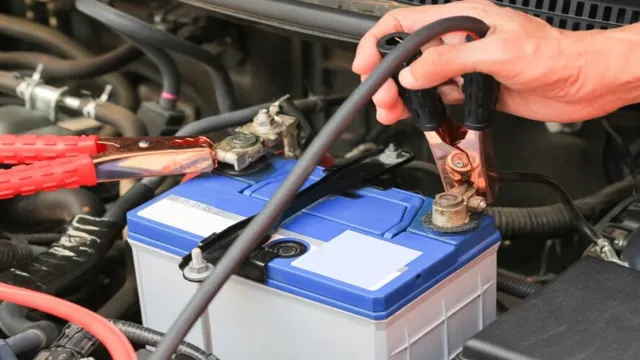
Factors to Consider in Choosing a Setting
When it comes to electric vehicle charging, choosing the right setting is crucial. One of the key factors to consider is the charging process itself. Different charging levels require different amounts of time to fully charge your vehicle, and not all settings offer the same charging options.
For example, Level 1 charging requires a standard 120-volt outlet and can take up to 12 hours to fully charge, while Level 3 charging requires a dedicated DC fast-charging station and can get you up to an 80% charge in just 30 minutes. Additionally, charging stations may have different connectors, so it’s important to make sure your vehicle is compatible with the charging setting you choose. Ultimately, understanding the charging process and knowing which level of charging your vehicle requires will help you make an informed decision on which charging setting to use for your electric vehicle.
Choosing the Right Setting for Your Car Battery Charger
When it comes to choosing the right setting for your car battery charger, it’s important to consider the type of battery you have and the charger’s capabilities. Most car battery chargers have different settings for charging lead-acid, gel, and AGM batteries, so make sure you select the appropriate setting for your battery type. Additionally, the amperage setting is important for determining how fast your battery will charge.
While higher amperage settings can charge your battery faster, they can also cause damage if used for too long or on a battery that can’t handle the higher amperage. It’s always best to consult your charger’s manual or a professional to determine the appropriate setting for your specific battery and charger combination. Overall, taking the time to select the right setting can help prolong the life of your battery and ensure it’s charged properly.
So, what setting should a car battery charger be on? It depends on your specific battery and charger, but by doing your research and taking the necessary precautions, you can ensure a successful charging process.
The Role of Voltage and Amperage Settings
Voltage and Amperage Settings, Car Battery Charger When it comes to charging your car battery, choosing the right voltage and amperage settings can make all the difference. These settings affect the rate at which your battery is charged, as well as the overall lifespan of your battery. Generally, it’s best to follow the manufacturer’s recommendations for your specific car battery charger.
However, if you’re unsure, here are a few general guidelines to keep in mind. First, make sure that the voltage settings on your charger match the voltage of your car battery. Using the wrong voltage can damage your battery, so it’s important to double check before you start charging.
Additionally, you’ll want to choose an amperage setting that’s appropriate for your battery. Too high of an amperage can overheat and damage your battery, while too low of an amperage can result in a slow and inefficient charge. Ultimately, the goal is to find the right balance between voltage and amperage for your specific battery.
This may take some trial and error, but it’s worth the effort to ensure that your battery is properly charged and maintained. With the right settings, you can extend the life of your battery and avoid costly replacements down the road. So take the time to understand your car battery charger and choose the right settings for your battery.
Different Types of Car Batteries and Charger Settings
Car Battery Charger Settings When it comes to car batteries, there are a variety of types to choose from, such as lead-acid, AGM, and lithium-ion batteries. Each type of battery has different charging requirements, so it is essential to choose the right setting on your car battery charger. For instance, if you have a lead-acid battery, you should use a charger with a voltage setting that aligns with your battery’s specification.
Similarly, AGM batteries require a specific charging current and voltage, so you must check the manufacturer’s recommendations before charging. Lithium-ion batteries have a different charging system altogether and need a specific charger that can handle the high voltage requirement. Therefore, it is crucial to ensure that you understand the type of battery in your vehicle and select the right charger settings accordingly.
Choosing the wrong setting could result in damaging your battery and even causing it to explode, leading to costly repairs and potential safety hazards. So, always check your car battery charger settings before starting the charging process to avoid any mishaps.
Common Mistakes to Avoid When Choosing a Setting
When it comes to choosing the right setting for your car battery charger, there are common mistakes that you should avoid. One of the most important things to keep in mind is the voltage of your battery. Be sure to select a charger that is compatible with your battery’s voltage requirements to ensure safe and efficient charging.
Another mistake to avoid is choosing a setting that is too high or too low for your battery’s current state. This can lead to overcharging or undercharging, both of which can lead to damage or reduced battery life. It’s also important to consider the charging time when selecting a setting.
A lower setting may take longer to charge, but it can prolong the life of your battery. Ultimately, the key is to choose the right setting based on the specifications of your battery, while also considering your own needs and preferences. By following these tips and avoiding common mistakes, you can select the perfect setting for your car battery charger and ensure that your car battery remains in top condition.
How to Charge Your Car Battery Safely and Effectively
When it comes to charging your car battery, it’s important to use a charger that’s compatible with your vehicle’s battery. Before you start, make sure the charger is set to the correct voltage and amperage for your battery. But what setting should a car battery charger be on? The answer depends on the type of battery you have.
For example, if you have a lead-acid battery, the charger should be set to the correct amperage for the battery’s capacity. Charging at too high or too low of a rate can damage your battery, so it’s important to follow the manufacturer’s instructions carefully. Additionally, you should always charge your battery in a well-ventilated area, as charging can release harmful gases.
By taking these precautions and using the right charger settings, you can safely and effectively charge your car battery and keep it running smoothly.
The Importance of Safety Measures during Charging
Charging your car battery may seem like a simple and straightforward process, but it is important to follow some safety measures to avoid potential accidents and damage to your car. The first thing to do is to ensure that your car is parked in a well-ventilated area away from any flammable materials. Before connecting the battery charger, make sure that your charger is compatible with your car’s battery specifications and that the charger is turned off.
Then, connect the charger’s positive and negative clamps to the corresponding battery terminals, starting with the positive clamp and then the negative clamp. It is important to follow this order to avoid any dangerous sparks that can result from connecting the negative first. Once the charger is connected, turn it on and wait until the charging is complete before disconnecting the charger.
Remember to always follow the manufacturer’s instructions and safety guidelines provided by your car’s manual. By taking these safety measures and charging your car battery properly, you can ensure that your car runs smoothly and avoid any unwanted accidents.
Step-by-Step Guide to Efficiently Charging your Car Battery
Charging your car battery can seem daunting, but fear not! This step-by-step guide will help you charge your car battery safely and efficiently. First, make sure your car is turned off and ensure that the battery isn’t damaged or leaking. Next, locate the battery and remove any covers or caps.
Connect the positive (red) clamp to the positive terminal of your battery and then connect the negative (black) clamp to the negative terminal. Once everything is connected, plug in the charger and turn it on. If your charger has a specific setting for your battery type, use it.
Charging times can vary, but a good rule of thumb is to let it charge for at least 12 hours. When the battery is fully charged, turn off the charger and remove the clamps in reverse order (negative first, then positive). Always wear gloves and safety glasses when handling the battery, just in case.
By following these steps, you can charge your car battery safely and effectively, and get back on the road in no time!
Conclusion and Final Thoughts
So, what setting should a car battery charger be on? Well, it all depends on the condition of your car battery. Make sure to read the instructions carefully and determine whether your battery needs a quick boost or a slow, steady charge. It’s like Goldilocks and the Three Bears, except instead of porridge, you’re dealing with volts.
Not too hot, not too cold, but juuuuust the right amount of electrical current. Trust us, your battery will thank you for it. Happy charging!
FAQs
What is the recommended setting for a car battery charger?
The recommended setting for a car battery charger is typically between 8 to 12 volts.
Can I use a high amp charger for my car battery?
It is not recommended to use a high amp charger for your car battery as it can damage the battery and reduce its lifespan.
What happens if I overcharge my car battery?
Overcharging a car battery can cause it to release hydrogen gas which can be dangerous. It can also cause the battery to lose its ability to hold a charge.
Can I use a trickle charger on my car battery?
Yes, a trickle charger can be used on a car battery as it provides a low and steady charge which helps maintain the battery’s longevity.
Should I disconnect my car battery before charging it?
It is recommended to disconnect the battery before charging it to prevent any electrical issues and potential damage to the charger or battery.
How often should I recharge my car battery?
It is recommended to recharge your car battery every 2-3 months to maintain its optimal performance.
Can I leave my car battery charger connected overnight?
It is not recommended to leave a car battery charger connected overnight as it can overcharge the battery and cause damage.
